Bust of Marcus Aurelius Caesar
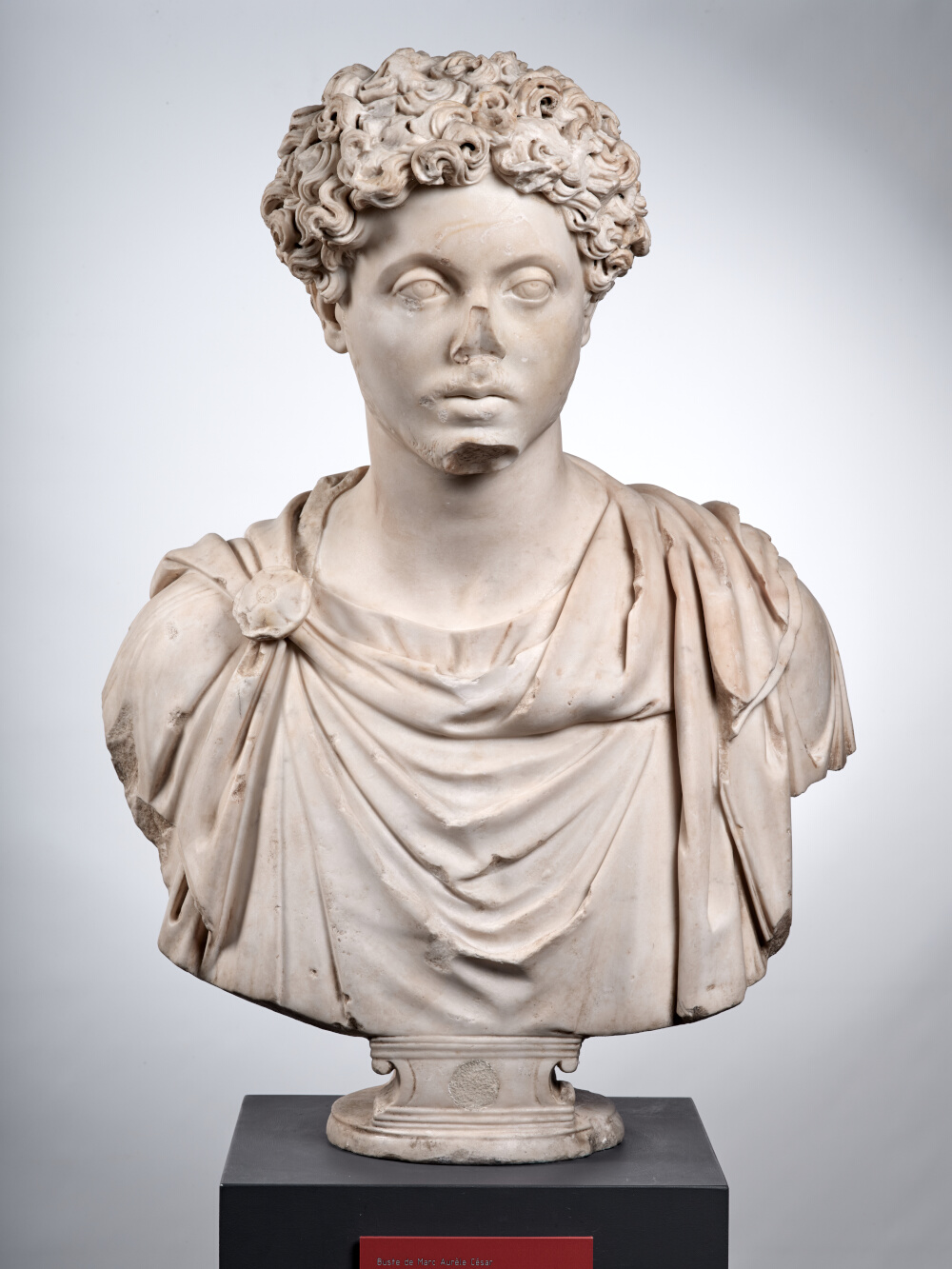
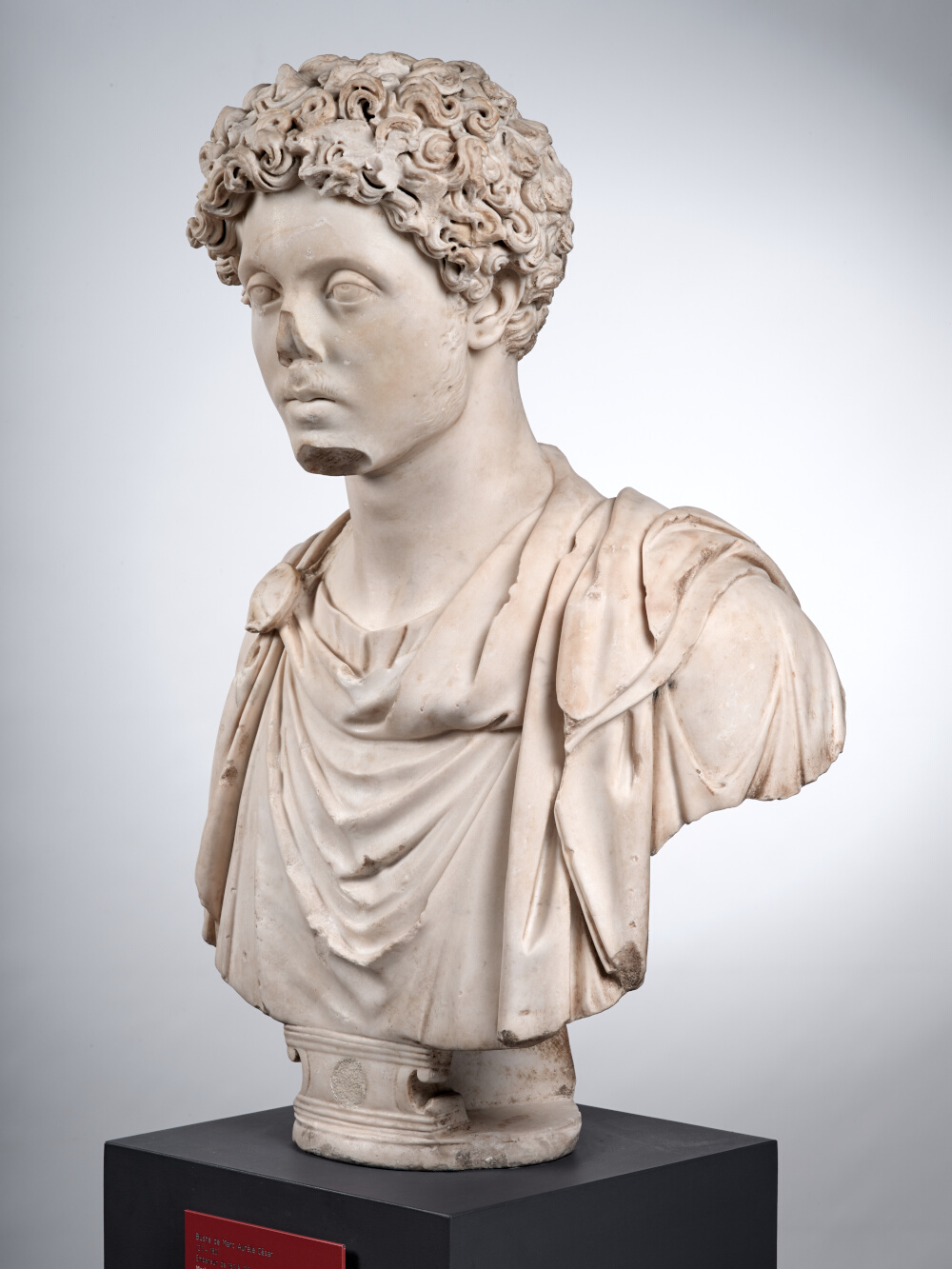
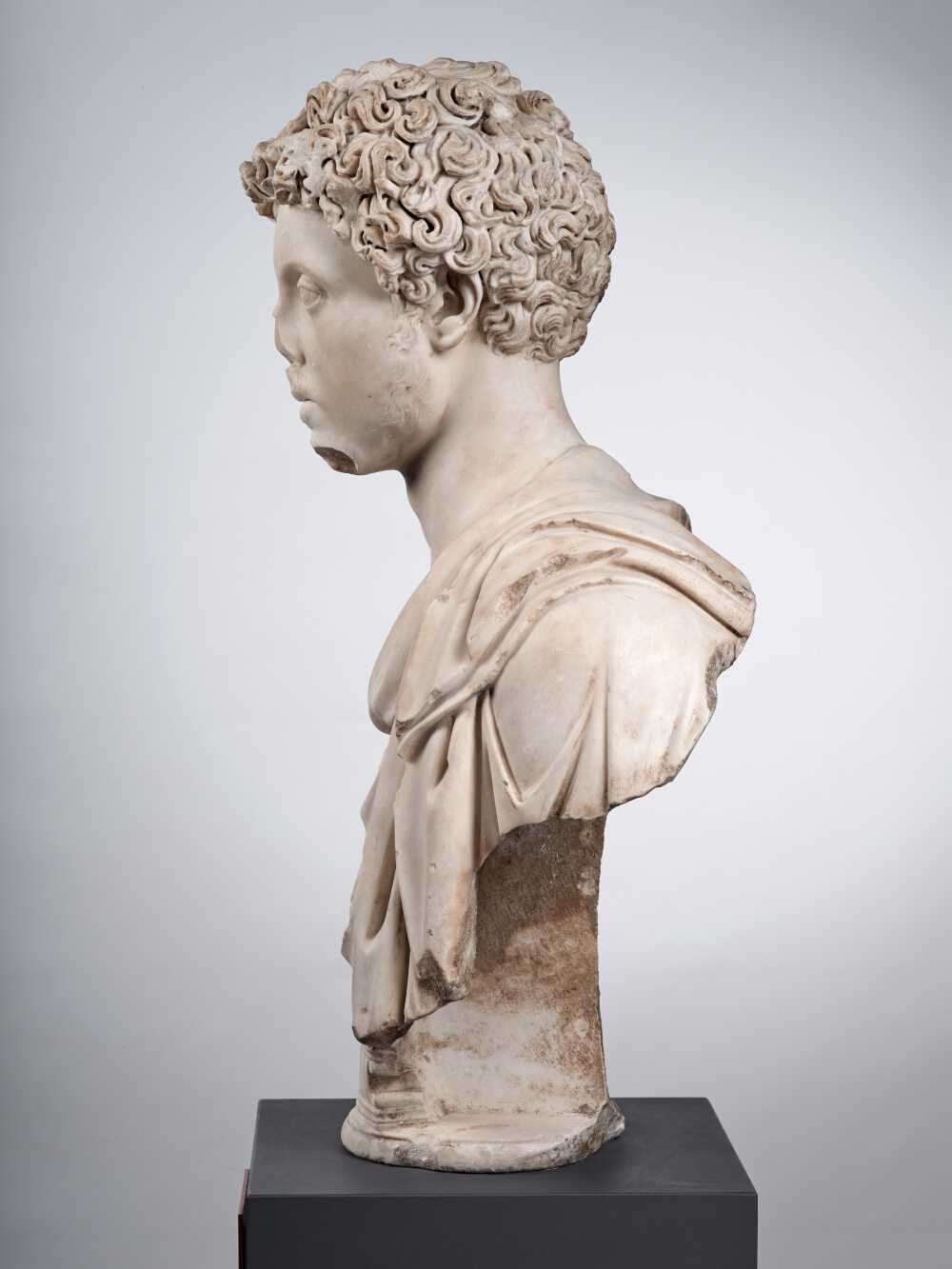
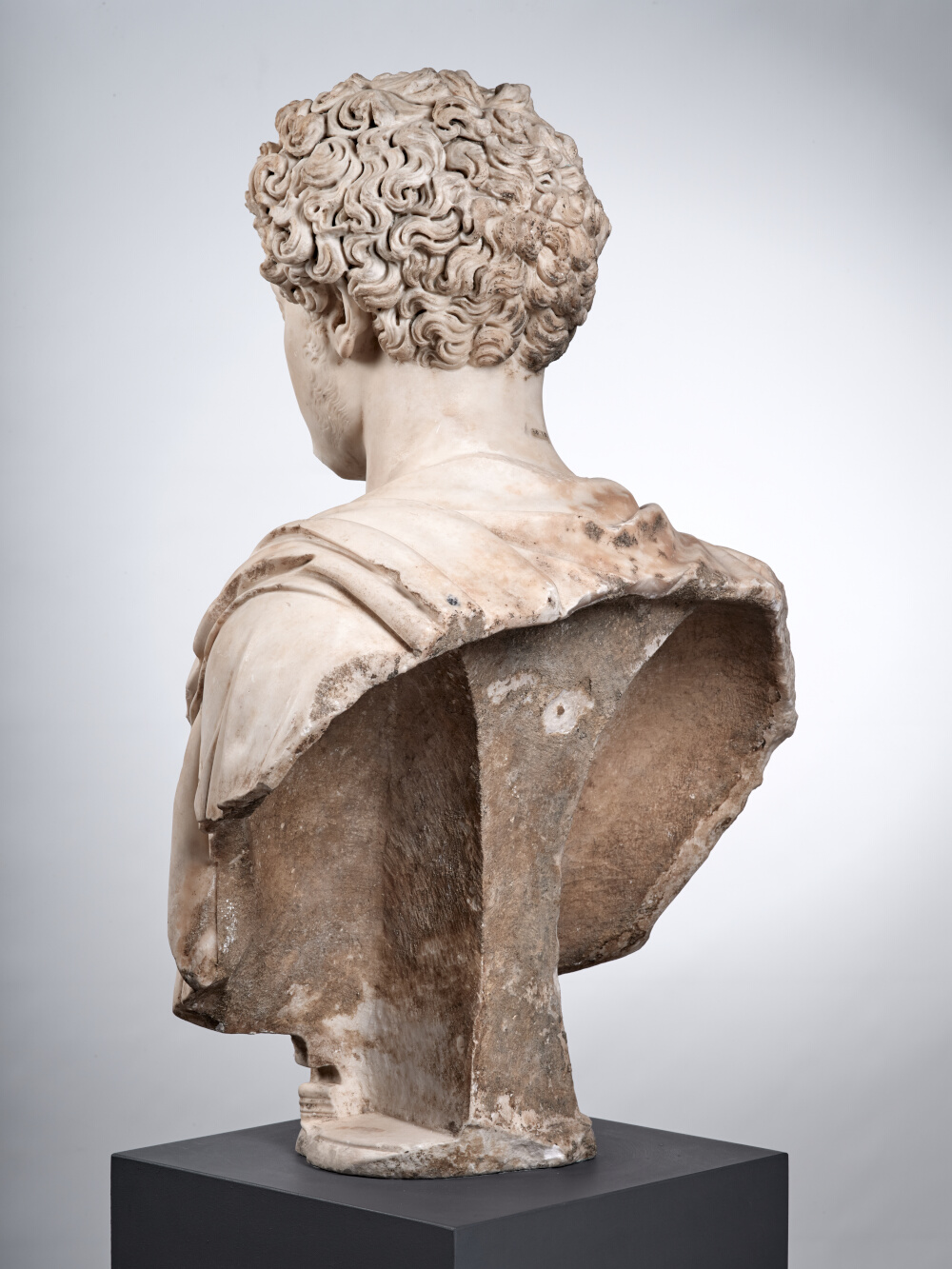
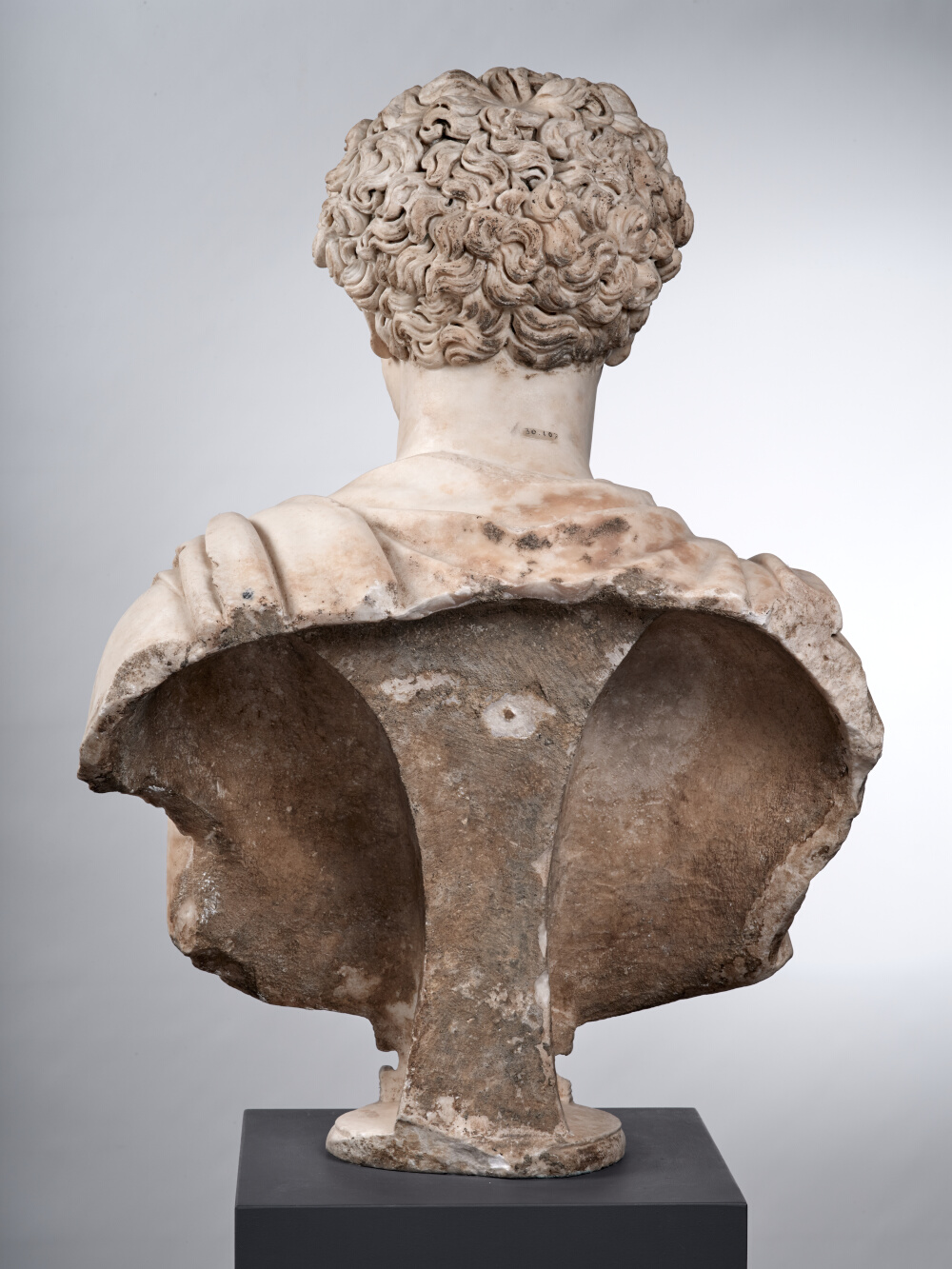
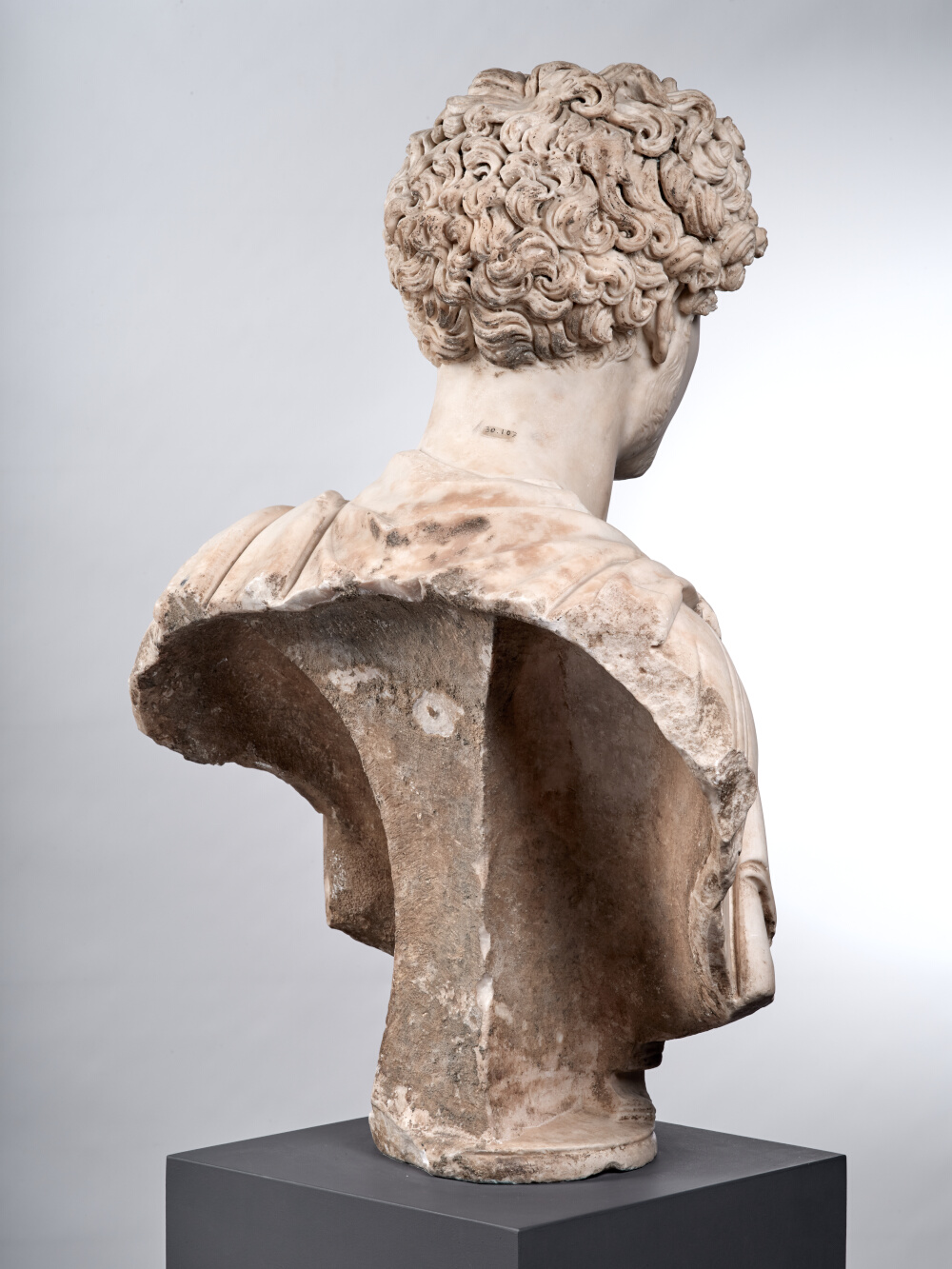
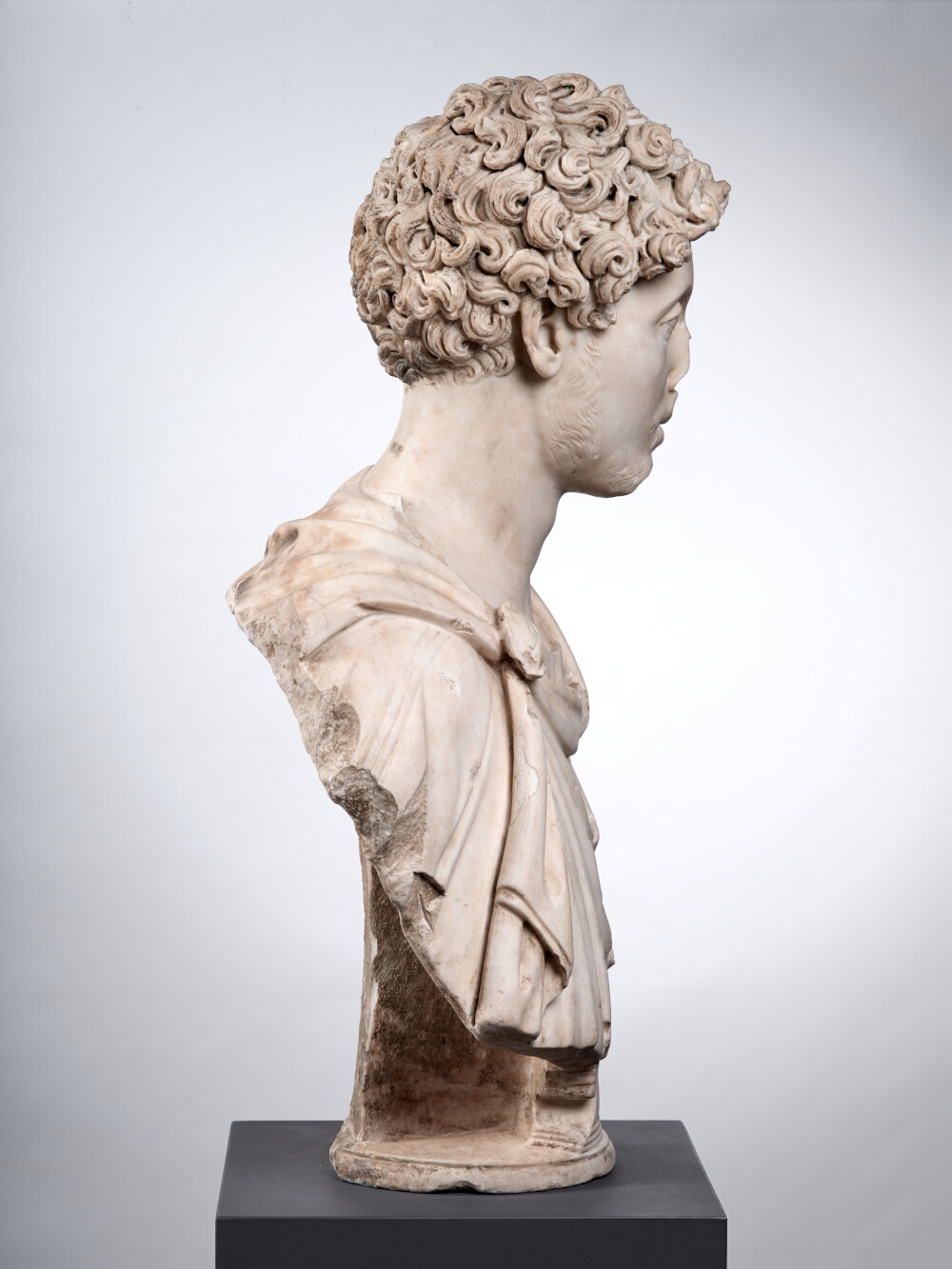
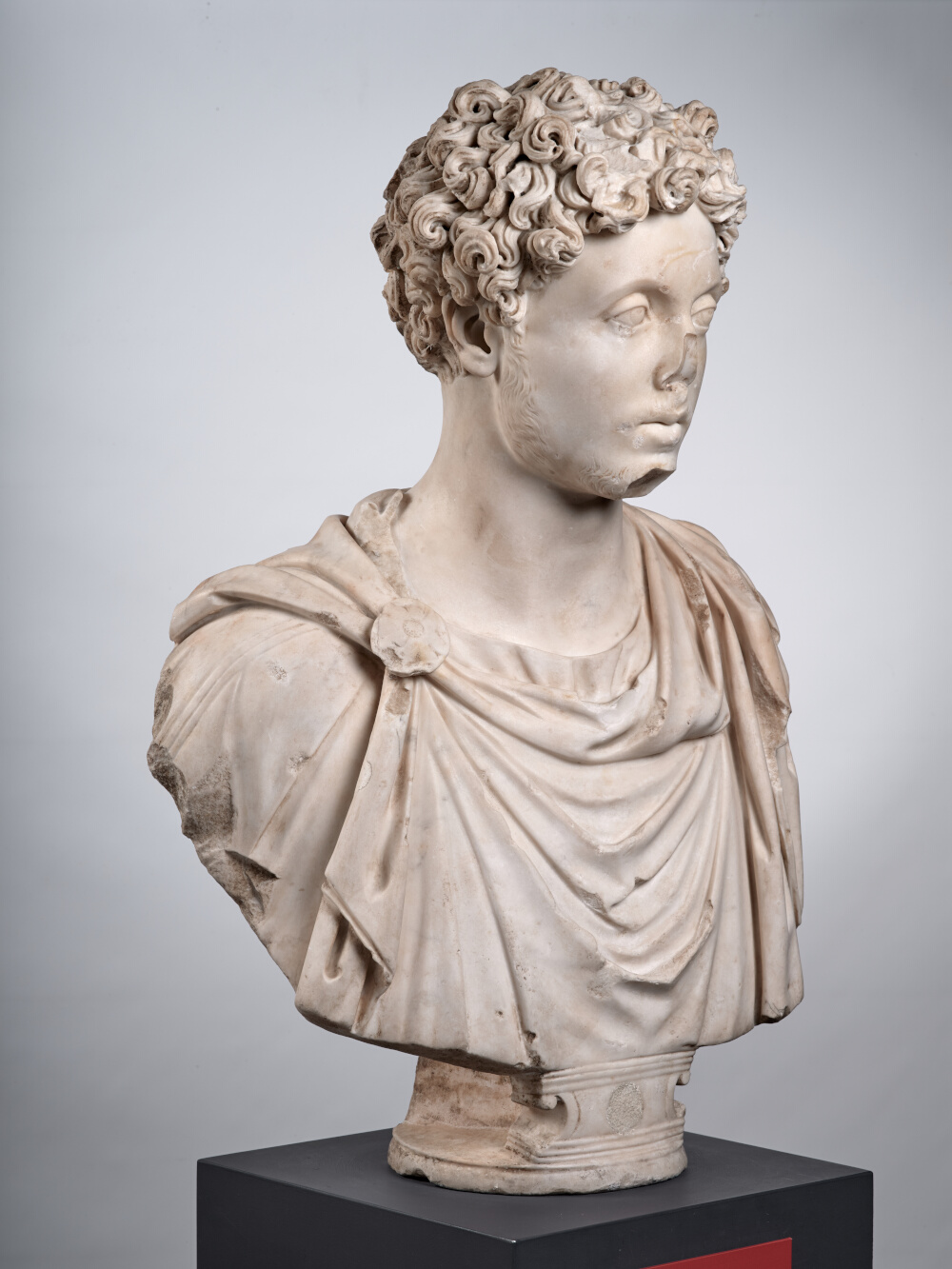
- Biographic data
- 121 - 180
Emperor from 161 to 180 - Date de création
- Between 144 and 147
- Type
- Known as the "Offices - Toulouse" type
- Material
- Göktepe Marble (Turkey)
- Dimensions
- H. 78,5 x l. 56,5 x P. 32,5 (cm)
- Inventory number
- Ra 61 a
- Photo credits
- Daniel Martin
Marcus Annius (?) Catilius Severus, later known as Marcus Aurelius, was born on 26th April 121 in Rome. His mother was Hadrian’s half-sister, making him the emperor’s nephew. The Historia Augusta records that he « was brought up under the watchful eye of Hadrian, who […]elevated him to an honourable status at the age of six by bestowing on him an Equus publicus, and had him join the Salii [the leaping priests of Mars] at the age of eight. […] He took to wearing the toga virilis (toga of manhood) at the age of fifteen, and was immediately engaged to the daughter of L. Ceionius Commodus, according to Hadrian’s wishes. » He was adopted by Antoninus Pius at the same time as Pius was adopted by Hadrian on the 25th February 138 at the age of 16. It is therefore hardly surprising that a fairly large number of portraits of the young man exist. Two successive iconographic types were used to depict him, but these soon merged. This one, the second type for Marcus Aurelius, known as the « Offices - Toulouse » type, is dated between 140 and 160/161.
During those twenty to twenty-two years (139/140 - 160/161), which correspond almost exactly to the reign of Antoninus Pius, he wielded his power under the name of Aurelius Caesar. At Antoninus’s request, he was forced to break off his engagement to marry the Emperor’s own daughter, Annia Galeria Faustina, nine years his junior. In 140, he was associated with the third consulate of Antoninus, and invited to settle in Tiberius’s palace (domus Tiberiana) on the Palatine Hill. Aurelius Caesar was eighteen years old in 139 and almost forty by the time he acceded to the imperial throne, when Antoninus died on 7th March 161. And it wasn’t until then that a new iconographic type began to circulate. These unchanging images were consistent with Antoninus himself, who was represented throughout this period thanks to a single iconographic type.
Although still an adolescent in 139, Aurelius Caesar was already a man of mature years in the decade that preceded his accession. As the father of a large family - Faustina was pregnant with twins; that is their tenth and eleventh children, at that time - he could no longer be portrayed as he had throughout the past ten to fifteen years. As sometimes happened under the Empire, the « adolescent type », was not fundamentally modified, but gradually « aged » by certain iconographic artifices. The beard was shown to be thicker and a small beauty spot was added to the lower lip. This and his moustache grew larger still in the last copies, which closely heralded the type that was to depict him at the time of his accession, in which his features were simply slimmed down and his hairstyle was slightly altered. By carefully examining the coins, it is possible to date these different adaptations with some precision.
The bust in Toulouse belongs to one of these sub-groups (sub-group ‘c’ in the classification made by Klaus Fittschen) that dates back to the years 144-147, of which there are nine known copies, discovered in Gaul, Africa, Asia Minor and Italy. This relatively high number of portraits is most probably explained by the fact that Aurelius Caesar was chosen for a second consulate in 144, an office he assumed in 145, and married Faustina in the spring of that same year. This marriage definitively sealed Antoninus’s choice to dedicate himself to the Empire. The bust found in Chiragan therefore dates back to these decisive years, and it was undoubtedly Aurelius Caesar’s new status that resulted in his official image being displayed in the villa, alongside the portrait of the reigning sovereign and the imperial images of previous reigns.
According to J.-C. Balty 2012, Les portraits romains, 1 : Le siècle des Antonins, 1.2 (Sculptures antiques de Chiragan (Martres-Tolosane), Toulouse, p. 207-218.
Bibliography
- Balty, Cazes, Rosso 2012 J.-C. Balty, D. Cazes, E. Rosso, Les portraits romains, 1 : Le siècle des Antonins, 1.2 (Sculptures antiques de Chiragan (Martres-Tolosane), Toulouse. p. 34-35, fig. 28-30, p. 208, 210, 212, 214-215, fig. 137-141, 143-144, 146-148, p. 262, fig.193
- Bergmann 1978 M. Bergmann, Marc Aurel, Frankfurt. p. 40
- Bernoulli 1882 J.J. Bernoulli, Römische Ikonographie, Stuttgart. II : Die Bildnisse der römischen Kaiser. 2 : Von Galba bis Commodus, p. 176, no 122
- Braemer 1952 F. Braemer, « Les portraits antiques trouvés à Martres-Tolosane, » Bulletin de la Société Nationale des Antiquaires de France, pp. 143–148. p. 145
- Cazes et al. 1999 D. Cazes, E. Ugaglia, V. Geneviève, L. Mouysset, J.-C. Arramond, Q. Cazes, Le Musée Saint-Raymond : musée des Antiques de Toulouse, Toulouse-Paris. p. 125
- Clarac 1841 F. Clarac, Musée de sculpture antique et moderne ou Description historique et graphique du Louvre et de toutes ses parties : des statues, bustes, bas-reliefs et inscriptions du Musée royal des Antiques et des Tuileries, et de plus de 2500 statues antiques … tirées des principaux musées et des diverses collections de l’Europe… accompagnée d’une iconographie égyptienne, grecque et romaine…. Tome II, Paris. p. 587
- Du Mège 1835 A. Du Mège, Description du musée des Antiques de Toulouse, Toulouse. p. 116, no 205
- Du Mège 1844 A. Du Mège, Description du musée des Antiques de Toulouse (document manuscrit ). no 367
- Du Mège 1828 A. Du Mège, Notice des monumens antiques et des objets de sculpture moderne conservés dans le musée de Toulouse, Toulouse. p. 65-66, no 126
- Espérandieu 1908 É. Espérandieu, Recueil général des bas-reliefs de la Gaule romaine, 2. Aquitaine, Paris. p. 66, no 960
- Fittschen 1999 K. Fittschen, Prinzenbildnisse antoninischer Zeit (Beiträge zur Erschliessung hellenistischer und kaiserzeitlicher Skulptur und Architektur), Mainz. p. 23, pl.
- Flisi 1989 E. Flisi, Questioni di ritrattistica antoniniana: dalla collezione del Palazzo ducale di Mantova, Florence. p. 57, no 37 d
- Joulin 1901 L. Joulin, Les établissements gallo-romains de la plaine de Martres-Tolosane, Paris. p. 118 et pl. XX, no 282 B
- Rachou 1912 H. Rachou, Catalogue des collections de sculpture et d’épigraphie du musée de Toulouse, Toulouse. p. 43, no 61 a
- Roschach 1892 E. Roschach, Catalogue des musées archéologiques de la ville de Toulouse : Musée des Augustins, Musée Saint-Raymond, Toulouse. p. 33, no 61 a
- Rosso 2006 E. Rosso, L’image de l’empereur en Gaule romaine : portraits et inscriptions (Archéologie et histoire de l’art), Paris. p. 460-461, no 220
- Wegner 1939 M. Wegner, Die Herrscherbildnisse in antoninischer Zeit (Das römische Herrscherbild), Berlin. p. 20, 204
- Wegner, Unger 1979 M. Wegner, R. Unger, « Verzeichnis der Kaiserbildnisse von Antoninus Pius bis Commodus, » Boreas. Münstersche Beiträge zur Archäologie, 2, pp. 87–181. p. 176
- Musée Saint-Raymond 2011 Musée Saint-Raymond, L’image et le pouvoir : le siècle des Antonins. Exhibition, Musée Saint-Raymond, Toulouse, 19 November 2011 - 18 March 2012, Toulouse. p. 50
- Musée Saint-Raymond 1995 Musée Saint-Raymond, Le regard de Rome : portraits romains des musées de Mérida, Toulouse et Tarragona. Exhibition, Mérida, Museo nacional de arte romano ; Toulouse, Musée Saint-Raymond ; Tarragone, Museu nacional arqueològic de Tarragona, 1995, Toulouse. p. 164
- Musées départementaux de Loire-Atlantique 1987 Musées départementaux de Loire-Atlantique, Le trésor de Garonne : IIe siècle après Jésus-Christ : des monnaies dans la "grave" : Musée monétaire, Paris ; Musée d’histoire de Marseille ; Musée d’archéologie-Musée Thomas Dobrée, Nantes…, Nantes. p. 76, no 98, fig. p. 20, 51
To cite this notice
Capus P., "Bust of Marcus Aurelius Caesar", in The sculptures of the roman villa of Chiragan, Toulouse, 2019, online <https://villachiragan.saintraymond.toulouse.fr/en/ark:/87276/a_ra_61_a>.